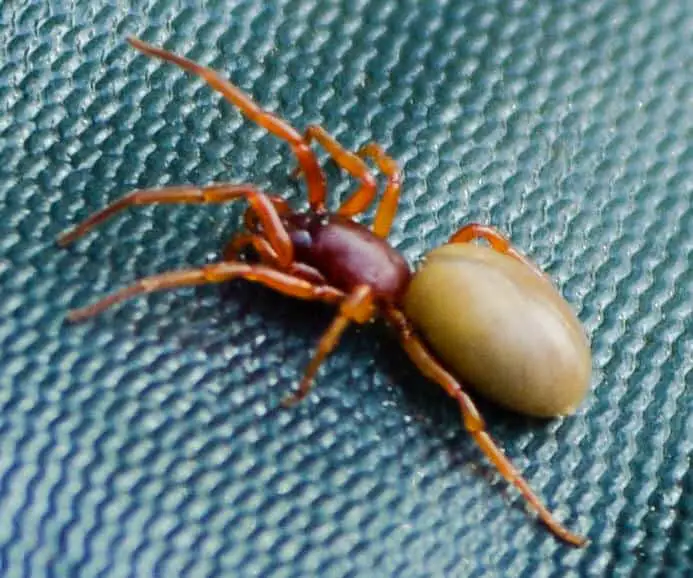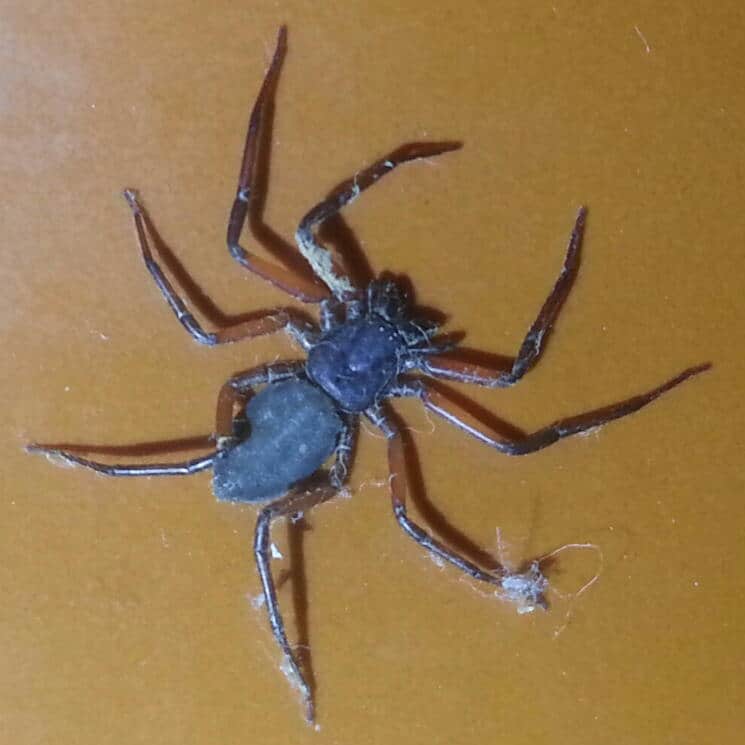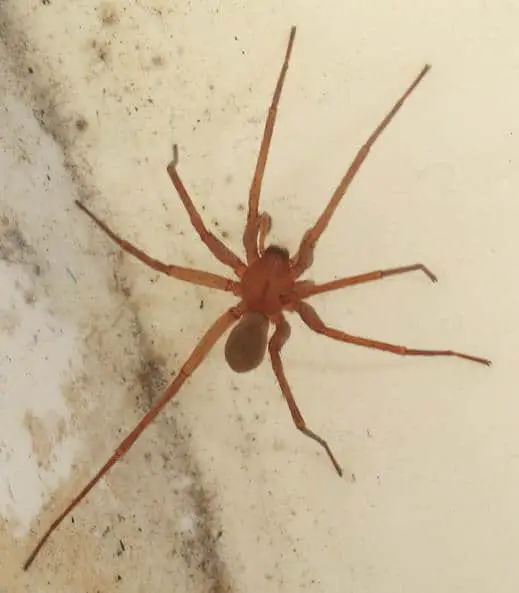Dysdera crocata (the woodlouse hunter), together with its preferred foods – woodlice, has been transported over much of the planet. Dysdera also feeds on beetles. These spiders have very large chelicerae, which they use to pierce the armoured bodies of woodlice and beetles. There are also some reports that they have a mildly toxic venom that can cause […]
Scorpion Spider
On this page, you can find some information as well as Scorpion/Flat Rock spider photos. This species is typically brown to black in colour to match the bark it hides under. It has a flattened body with an elongate oval abdomen from which two pairs of wide-set spinnerets can be seen from above. The legs curve […]
Tree Trunk Spider
Tree trunk spiders belong to the Family Hersiliidae. There are about 150 species in this family and many more undiscovered. . Female Tree Spiders are around 19mm in body length from its chelicerae to the tip of its spinnerets. When her legs stretched out, its longest legs can reach 45mm. They range in size from about 10 […]
Black House Spider – Badumna insignis
The Black House (or window) spider is found in most of Australia including Tasmania and has been introduced into New Zealand. It likes dry temperature and is more common inland. The Scientific name for the Black House spider is Badumna Insignis. The description of the Female is up to 18mm long and the Male is […]
Southern House Spider
The Southern House Spider, Kukulcania (Filistata) hibernalis Hentz, is a conspicuous arachnid due to its relatively large size and distinctive flat, tangled web. It is common throughout Florida and much of the southern United States in human populated areas. Females are rarely seen and don’t venture far from their web. The females are dark brown or black and […]
Brown House Spider
The Brown House spider (badumna longinqua) resembles the black house spider except that it is usually brown rather than black and has more obvious surface markings on its abdomen. It appears to be much more common than the black house spider in coastal South-east Queensland. This species is commonly found in retreats of leaves and […]
Titiosis Spider
This spider is a species within the genus Titiotus, which is native to California. It is often mistaken for a brown recluse because of the colouring and faint violin shape on the abdomen. Titiotus superfically looks like a brown recluse spider, or desert recluse spider, but isn’t. Titiotus has eight eyes, whereas brown recluse-type spiders have […]







